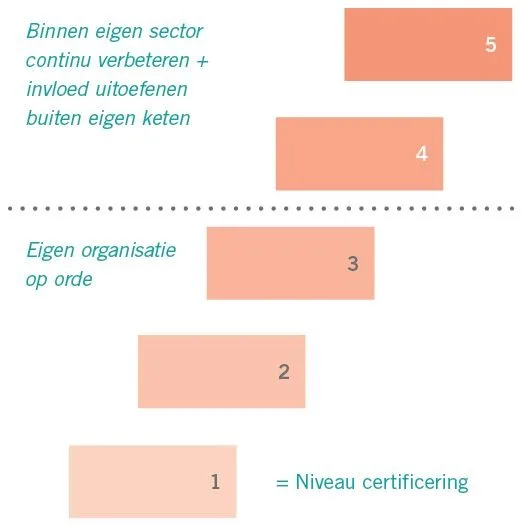Ontdek de mogelijkheden
Ontdek de mogelijkheden
Vul dit formulier in en wij contacteren jou zo snel mogelijk.

In de hedendaagse bedrijfswereld is duurzaamheid niet langer een optionele overweging, maar een essentiële component van verantwoord ondernemen. Zowel bij een kleine onderneming, maar zeker voor grotere bedrijven en beursgenoteerde KMO’s. Bij Prevom begrijpen we het belang van duurzaamheidsrapportage en hoe het kan dienen als een krachtig instrument om transparant te communiceren met jouw stakeholders.
Het opstellen van duurzaamheidsrapporten wordt steeds belangrijker. Het is niet alleen een manier om jouw inzet voor duurzaamheid te tonen, maar ook om op een efficiënte en transparante manier te communiceren en te rapporteren naar jouw stakeholders. Samengevat, drie pijlers (people-planet-prosperity): goed doen voor de mensen, goed doen voor het leefmilieu & goed besturen. Een correct opgesteld rapport kan vertrouwen wekken, risico’s verminderen en nieuwe kansen in de markt onthullen.


Of u nu net begint met jouw duurzaamheidsreis of al ver gevorderd bent, Prevom staat klaar om jouw bedrijf te ondersteunen. Ons team van experts kan jou begeleiden bij elke stap, van het opstellen van een rapport tot het implementeren van duurzame strategieën. Neem vandaag nog contact met ons op en zet met je onderneming de volgende stap in jouw duurzaamheidsreis.

Het doel van een milieuscan is om mogelijke milieugevolgen te identificeren, zoals vervuiling van water, lucht of bodem en om te kijken hoe deze gevolgen geminimaliseerd of voorkomen kunnen worden.
Tijdens een milieuscan bekijken we verschillende aspecten, zoals energieverbruik, afvalproductie, gebruik van grondstoffen en uitstoot van schadelijke stoffen. Het resultaat van de scan helpt bedrijven of organisaties om milieuvriendelijke keuzes te maken, wet- en regelgeving na te leven en bij te dragen aan duurzaamheid.
Samengevat biedt een milieuscan inzicht in de ecologische voetafdruk van een activiteit en stelt het maatregelen voor om negatieve effecten te beperken.

Duurzaamheidsrapportage is het proces waarbij een onderneming haar prestaties op het gebied van leefmilieu, sociale verantwoordelijkheid en deugdelijk bestuur (governance ESG) openbaar maakt. Het doel van de rapportage is om transparant te zijn over de impact van de bedrijfsactiviteiten op mensen en de leefomgeving, en om de strategieën te tonen die het bedrijf inzet om duurzaam en maatschappelijk verantwoord te ondernemen (MVO).
De nieuwe Europese richtlijn CSRD (Corporate Sustainability Reporting Directive) verplicht de grootste bedrijven vanaf 2024 te starten met duurzaamheidsverslaggeving. Stelselmatig wordt de verplichting uitgebreid naar kleinere bedrijven. Het volgende overzicht geeft weer welke bedrijven vanaf wanneer moeten rapporteren.
Let wel op: zelfs niet-rapporteringsplichtige ondernemingen kunnen toch verplichtingen hebben. Partners die wel onder de richtlijn vallen, kunnen namelijk eisen stellen en je opleggen wel een duurzaamheidsrapport op te stellen. Als leverancier aan een groot bedrijf bijvoorbeeld, moet je voldoende en juiste gegevens kunnen aanreiken. Ook kleine ondernemingen houden hier dus best rekening mee.
Duurzaamheidsrapportage kan aanvoelen als de zoveelste verplichting, maar het kan je onderneming ook wat opleveren. Een degelijk opgesteld verslag biedt namelijk verschillende voordelen, waaronder:
De noodzakelijke inhoud om te voldoen aan de CSRD staat omschreven in de ESRS-standaarden. Naast algemene informatie, moet een duurzaamheidsrapport specifieke informatie bevatten over de thema’s milieu-impact, sociale verantwoordelijkheid, en governancepraktijken van een organisatie. Die thema’s worden verder onderverdeeld in subthema’s:
Bij het opstellen van een duurzaamheidsrapport kun je de volgende stappen volgen:
Een duurzaamheidsrapport en een ESG-rapport richten zich beide op milieu, sociale en governance-kwesties, maar het verschil ligt in de nadruk.
Een materialiteitsanalyse is het proces waarin een organisatie de duurzaamheidsonderwerpen identificeert die het meest relevant zijn voor haar bedrijfsvoering en haar stakeholders. Dit helpt bedrijven om hun rapportage te richten op de gebieden waar ze de meeste impact hebben, zoals CO2-uitstoot, arbeidsomstandigheden, of energieverbruik. Door deze analyse weten ondernemingen welke onderwerpen prioriteit moeten krijgen in hun strategie rond duurzaamheid en rapportage.
Er zijn verschillende internationale standaarden en kaders die bedrijven kunnen gebruiken voor hun duurzaamheidsrapportage. De meest voorkomende zijn:
Het meten van duurzaamheidsprestaties kan via verschillende key performance indicators (KPI’s) die betrekking hebben op milieu, sociale en governance-kwesties. . Die indicatoren moeten vergelijkbaar zijn en worden best opgesteld met een mogelijke groei van het bedrijf in het achterhoofd. Zo kan de totale CO2-uitstoot van een onderneming jaar na jaar stijgen, terwijl het eigenlijk relatief, bijvoorbeeld per geproduceerde eenheid, daalt. Voorbeelden zijn:
Een duurzaamheidsrapport wordt jaarlijks gepubliceerd, samen met het financiële jaarverslag van een bedrijf. Dit zorgt voor een regelmatige update van de voortgang van de duurzaamheidsdoelstellingen en geeft externe belanghebbenden een actueel beeld van de prestaties van de organisatie op het gebied van milieu, sociale verantwoordelijkheid en governance.
Vul dit formulier in en wij contacteren jou zo snel mogelijk.